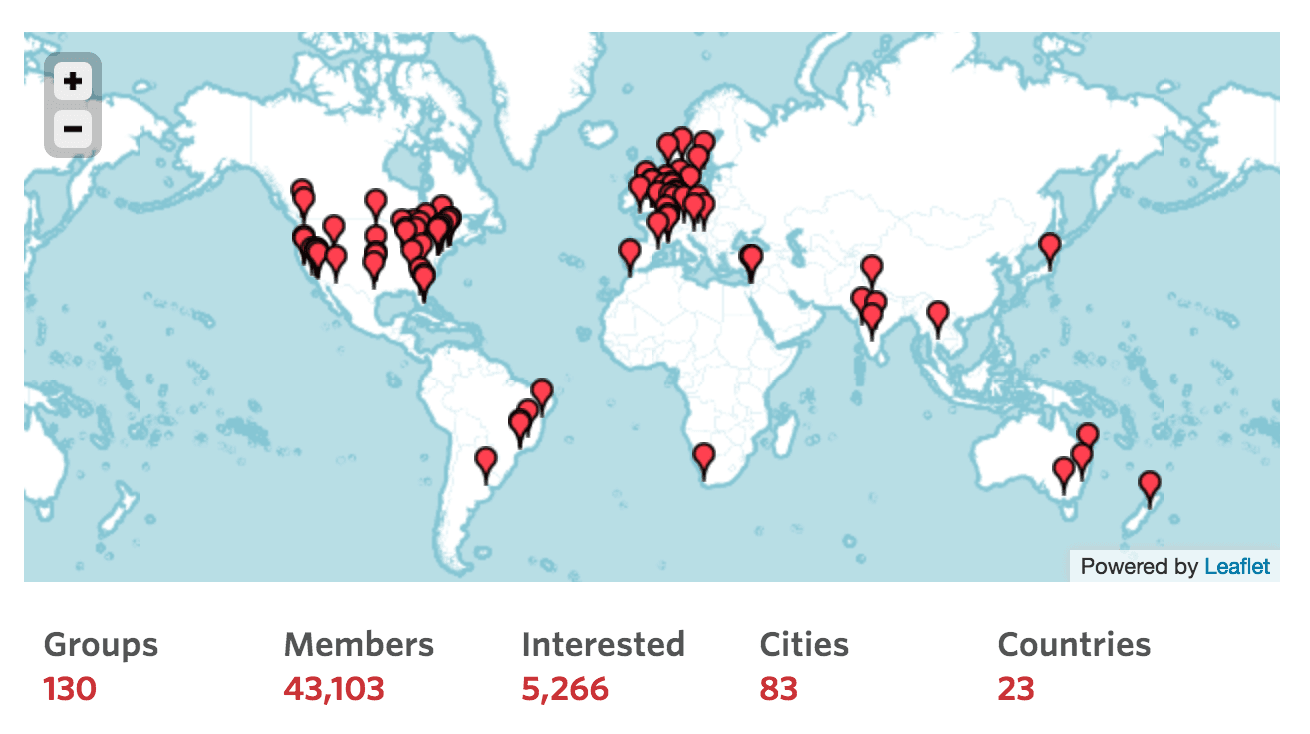
Sergey Chernyshev (@sergeyche) organizes New York Web Performance Meetup and helps other performance enthusiasts around the world start meetups in their cities. Sergey volunteers his time to run @perfplanet twitter companion to PerfPlanet site. He is also an open source developer and author of a few web performance-related tools including ShowSlow, SVN Assets, drop-in .htaccess and more.
Web performance conversation has started by Steve Souders back in 2007, shortly after, in May 2009 I started a Web Performance meetup in New York and it has been going well since then. But more importantly, fellow performance enthusiasts around the globe started to organize groups in their cities and local community is now huge!
Most of the groups have monthly meeting with a speaker presentations and sometimes run hands-on sessions where they come together, open their laptops and analyze web site’s performance, discuss potential optimization techniques and even fix web sites in real time.
And one of the biggest drivers for this are O’Reilly Velocity conferences that show people that meeting and discussing performance is critical and local organizers also run WebPerfDays un-conferences around Velocity – these events usually use open spaces format and concentrate around the open conversations around important topics of the trade.
While I’m very happy with the progress this local movement has made, I believe that WPO is still a very young industry.
We’ve made great progress in developing tooling and establishing good direction for solutions, vendors emerged and there is now a lot good support system available. At the same time, speed did not yet become an obvious concern for people who build web and mobile UI.
While front-end engineering became an industry by itself, especially now with mobile web (and apps) overtaking traditional desktop efforts, I still see that speed is not a concern and constraint that people pay enough attention to.
Performance optimization process is still not as clear as project management, QA or version control and requires constant convincing, reminding and reinforcement.
We need more data, white papers, visualizations, solid processes
While the industry is chasing new technology solutions, it is critical to address this cultural problem to be able to efficiently move forward.
We had a great start with great research from big companies in digital space like Google and Microsoft and a few smaller companies, mostly from e-commerce space like Shopzilla and even Barak Obama’s campaign, but we we need more case studies from other industries, specifically media-rich media industry responsible for majority of content and slowness.
In addition to just more experiences shared, we need better ways to visualize multitude of data dimensions and ginormous amount of data that we learned to collect with synthetic and RUM tools across many layers of our systems. It is critical for developers, ops and other decision makers in the space to be able to make quick and easy decisions regarding performance.
And more then anything we need to develop and share processes that will make performance an integral part of product creation process like project management, UX, SEO and QA are already.
Not scalability, but ops are friends (so are designers and business)
One important reason for this is UI Performance concern being distributed across the layers of operations and not only being in the hands of front-end engineering.
While it is important to distinguish performance from scalability and therefore look at the problem from user experience perspective and not from server load perspective, it is critical for front-end developers to engage back-end development teams and operations teams in performance conversation as causes for slowness are all over the infrastructure and solutions can come from every side of the technology stack.
And looking at technology, it is also critical not to forget that our products have other important components like design and UX for example, this makes designers and product managers as much members of our performance task force as developers and ops people are, don’t forget to include them in conversation.
And last, but not least, make sure that business team joins the decision making as often times only serious business outcomes can justify significant investment of resources into performance and showing clear business value and putting “performance feature” on the same plate as other features for business to pick is needed.
Spread the word
To have all those people in the room, you need to make some serious effort inside and outside your organization and best way to have it trickle down to all the teams is to organize knowledge sharing events, ideally with people from outside (everybody loves an external expert).
Obvious way to do that is to host a local Web Performance meetup and if there is none in your city, nothing should stop you from organizing one and building performance community around your organization!
And once you have the group going, don’t hesitate to send emissaries with performance talks to other groups in performance ecosystem – front-end and back-end development groups, web ops groups, design and UX groups, web analytics groups and so on!
Join the network of passionate people and spread your passion for web performance cause and let’s get rid the world of frustration that slowness causes!


